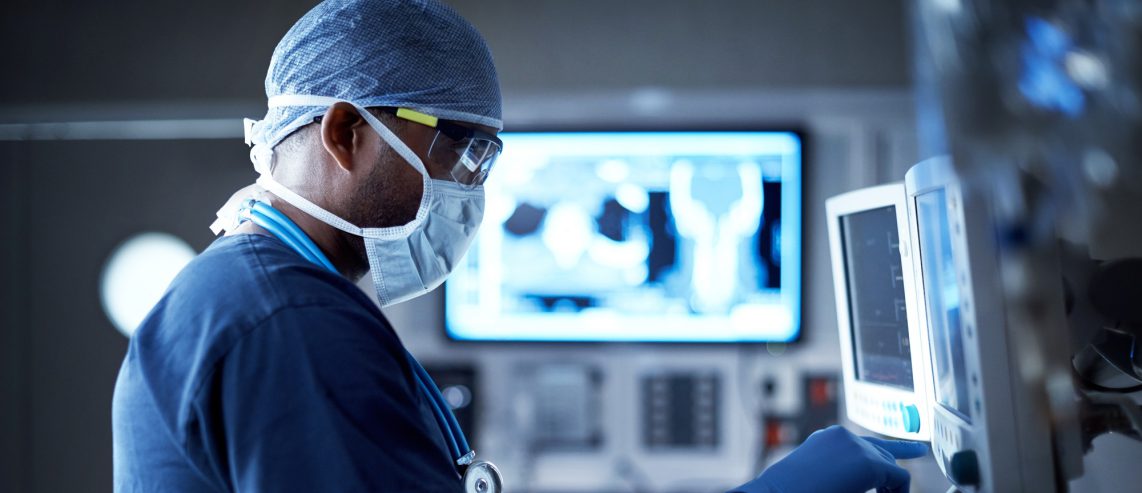Aneurysms occur when a section of the artery wall weakens, causing it to abnormally balloon out or widen. Aneurysms are generally asymptomatic (without symptoms) but may cause pain in the abdomen, chest, or back depending on the location.
When Charles Geiselhart began to feel unwell in 2018, his wife and family were concerned and encouraged him to seek care for his health. Charles turned to the experts at UPMC.
After several visits, his doctor at the time ordered a CT scan – a noninvasive test that uses x-rays to make images of organs and vessels – to diagnose his condition. The team confirmed that Charles had a specific kind of aneurysm known as an aortoiliac aneurysm.
Never Miss a Beat!
Subscribe to Our HealthBeat Newsletter!
Thank you for subscribing!
You can now select the specific newsletters you'd like to receive.
You are already subscribed.
Subscribe to more newsletters in our email preference center.
Sorry, an error occurred. Please try again later.
Get Healthy Tips Sent to Your Phone!
The Condition: Aortoiliac Aneurysm
Aortoiliac aneurysms involve the abdominal aorta and iliac arteries — the large arteries responsible for transporting oxygen-rich blood from the heart to the lower part of the body and the legs.
When an aneurysm forms, the artery wall becomes weakened and can balloon or bulge out. The vessel expands several times its normal size, and when it reaches a critical size, it can burst — known as a rupture. Ruptures cause significant bleeding and are life-threatening.
As the aneurysm enlarges, the risk of rupture increases, which often can cause death.
Symptoms
The symptoms of an aortoiliac aneurysm can vary and often are not immediately present until it is too late. It is important to discuss your risk factors during regular visits with your doctor, especially if you have a family history of aneurysm disease.
While the bulge of an aneurysm can sometimes be detected by a physical exam, aneurysms are generally silent and do not cause symptoms. When pain in the abdomen, chest, or back occurs due to an aneurysm, it may be in the process of bursting.
As such, aortoiliac aneurysms can become a medical emergency and are better addressed in a controlled setting before they rupture.
Risk Factors
Aortoiliac aneurysms frequently occur in older adults. In 2018, about 58% of people who died from an aortoiliac aneurysm or dissection were male.
You may also be at an increased risk for aortoiliac aneurysms if you:
- Have high blood pressure.
- Smoke.
- Have a family history of aneurysms.
- Experienced trauma, such as a car accident.
Your doctor may recommend regular testing if you are at risk for developing an aneurysm. They often can screen for it with a physical exam, CT scan, or ultrasound.
After Charles’ doctors identified his aortoiliac aneurysm, they referred him to the experts at the UPMC Heart and Vascular Institute for treatment. Rabih A. Chaer, MD, a vascular surgeon at the UPMC Heart and Vascular Institute and chief of Vascular Surgery at UPMC Presbyterian, accepted Charles’ case.
Individualized Treatment for Aortoiliac Aneurysms
Dr. Chaer evaluated Charles’ condition and worked with him to develop a treatment plan customized to his needs. Dr. Chaer performed a complex repair that involved a custom-made fenestrated graft as well as an iliac branched device. Both are novel technologies that allow a minimally invasive treatment of a complex problem.
Treatment options for aortoiliac aneurysms can vary based on the severity of the case. Often, doctors will evaluate the patient and recommend:
- Consistent monitoring and evaluation if the aneurysm is small.
- Endovascular repair — in which the doctor seals off the aneurysm with a graft to make a new path for blood flow. This is the type of repair that was tailored to Charles’ complex anatomy to allow for a minimally invasive repair with a short hospital stay and a quick recovery.
- Open surgical repair — a more invasive option in which the doctor repairs the blood vessel by replacing the diseased section with a synthetic graft.
Our team of vascular surgeons at the UPMC Heart and Vascular Institute have experience treating patients with a range of vascular conditions. We offer the full spectrum of endovascular and open surgical repair and utilize advanced technology and services to provide comprehensive care for every patient, like Charles.
Charles still attends regular appointments with Dr. Chaer every year for follow-up care. He is back to enjoying retirement and doing the things he loves most, including playing jazz and country music on his saxophone while riding a unicycle.
“My faith is everything to me, and it has gotten me through a lot of life experiences,” says Charles, “I’ve been going to UPMC all my life. They provide great care.”
To learn more about vascular surgery services at UPMC, visit our website.
About Heart and Vascular Institute
The UPMC Heart and Vascular Institute has long been a leader in cardiovascular care, with a rich history in clinical research and innovation. As one of the first heart transplant centers in the country and as the developer of one of the first heart-assist devices, UPMC has contributed to advancing the field of cardiovascular medicine. We strive to provide the most advanced, cutting-edge care for our patients, treating both common and complex conditions. We also offer services that seek to improve the health of our communities, including heart screenings, free clinics, and heart health education. Find an expert near you.
